Home plum grows in almost every garden plot. Its fruits are fragrant and pleasant to taste, they are eaten fresh and make preparations for the winter - stewed fruit, preserves, jams. Breeders bred a huge variety of varieties that will please the crop and unpretentiousness in care.
Material Content:
Plum: description of varieties and nuances of cultivation
Varieties of home plum, one of the 250 species of the genus Plum, are usually divided by maturity. There are early, mid-ripening and late varieties. Plums also differ in disease resistance, frost resistance, size, taste and color of the fruit, the expected amount of the crop.
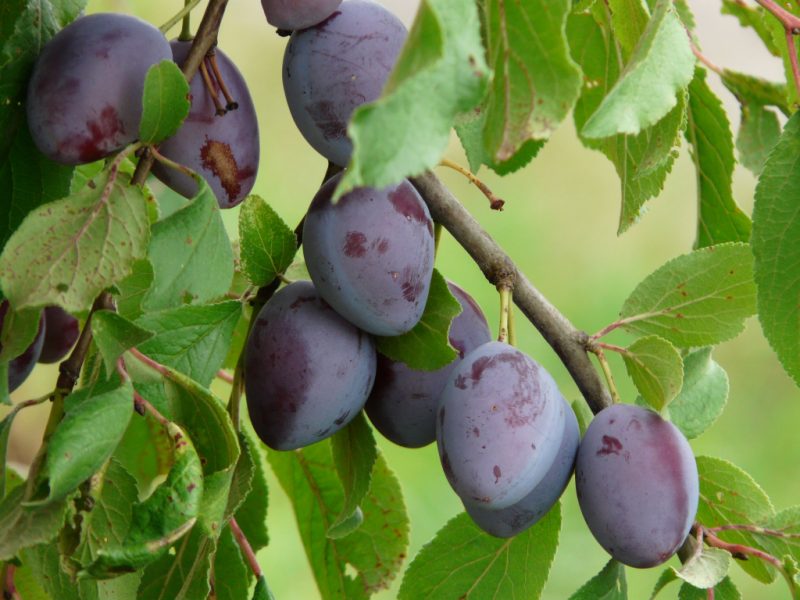
The best varieties include:
- "Yakhontovaya" - differs in frost resistance and resistance to diseases, the fruits are yellow, sweet and sour taste, weighing up to 30 g;
- "Chinese" - winter-hardy, ripens in mid-September, resistant to diseases, fruits are red, sweet, weighing up to 70 g;
- "Giant" - the tree is not hardy, can be affected by fungal diseases, but the fruits are wonderful - very large (up to 110 g) and sweet.
- "Skoroplodnaya" - fruits weighing up to 30 g, ripen in the first decade of August, they have a reddish hue and yellow, sweet pulp, the variety is resistant to frost, disease and drought;
- "Stanley" - grown in the southern regions of Russia, the variety has large dark purple fruits with dense, sweet and fragrant pulp, which are suitable for drying;
- "Plum Volga beauty" - the variety was bred in the 30s of the last century, the trees are vigorous, the fruits are oval-round, red-violet, weighing up to 50 g.
In addition to homemade plums, there are other varieties that differ in taste, appearance and care requirements, for example, Japanese plum, peach plum, Chinese lychee plum.
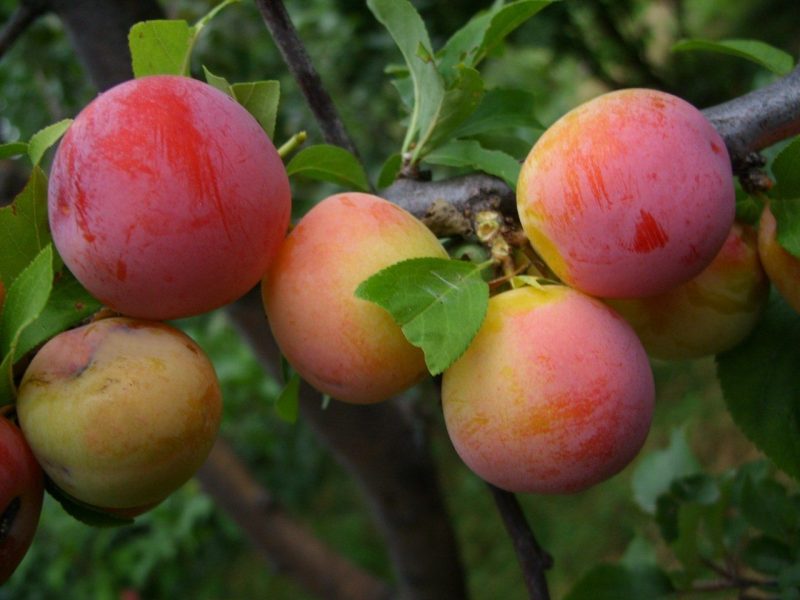
The listed varieties can produce crops already at the age of three. Trees are characterized by good productivity. But for some gardeners, other varieties are more suitable, there are a great many of them. Personal taste preferences and the compliance of varietal characteristics with natural climatic conditions influence the choice of variety.
How to grow a plum on your plot
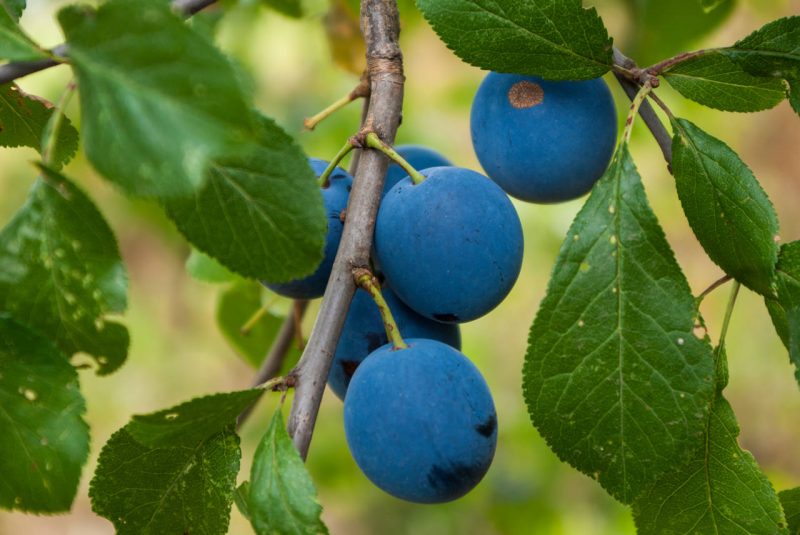
In order to harvest plums, it is necessary to plant different varieties nearby that will pollinate each other. There are self-pollinating plums, but most need pollinators. Therefore, you need to choose for planting two different varieties with the same flowering period. If there is not enough space in the garden, you can plant a branch of another plum variety in the tree crown.
Seedling selection
For planting, one or two year old seedlings are acquired. Annuals have a thin trunk without branches. Two-year-old seedlings have a trunk diameter of at least 2.5 cm, they must have 3 or 4 branches.

When choosing a seedling, you need to see if it has good roots. It is better to buy a young tree in the nursery. Experienced sellers cover the roots of the plant with a clay mash to protect them from drying out and damage. If the roots are not protected, they must be wrapped in a damp cloth before being transported.
Site preparation, landing pit
You must choose the right place to land. Plum can be planted on earthen mounds, this will create favorable growth conditions for its roots.
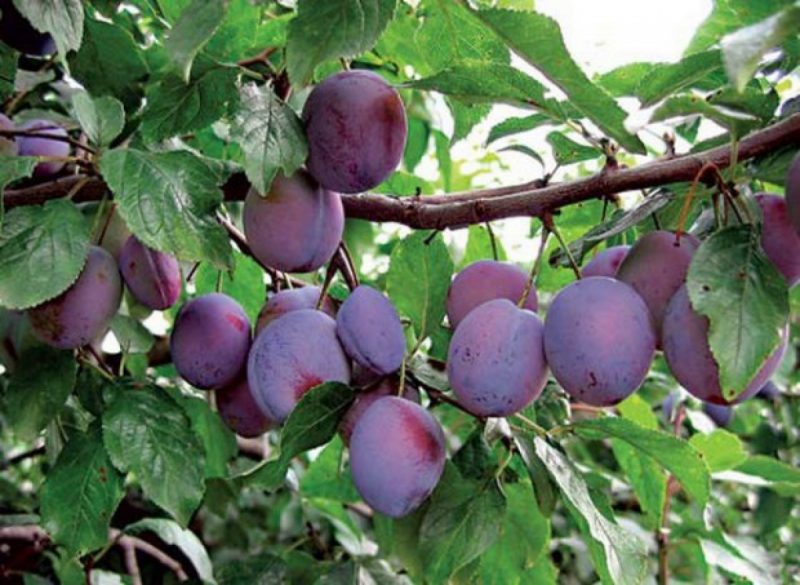
Plum loves neutral or alkaline soil; a plant growing in alkaline soil is less likely to suffer from gum dropping. It is advisable to add a special deoxidizer to the soil for planting. Be sure to fill the planting pit with fertile soil, adding a small amount of complex fertilizer in granules. River sand must be added to heavy soil so that it is loose.
Planting plums in open ground
In the middle lane, plum trees are planted in spring in early April. In autumn, young trees are planted in late September. In the southern regions of Russia, plum can be planted in spring in March, and in autumn in October. Weather conditions must also be considered.
A plum needs a pit, as for all stone fruits - 70 cm wide and 70 cm deep. It is prepared in advance, so that before planting the soil a little donkey. The seedling is placed in a pit on a small elevation from the prepared fertile land, the roots are straightened, and covered with fertile soil from above. The planted tree is watered, the soil in the near-stem circle is mulched.
Plum care at different times of the year
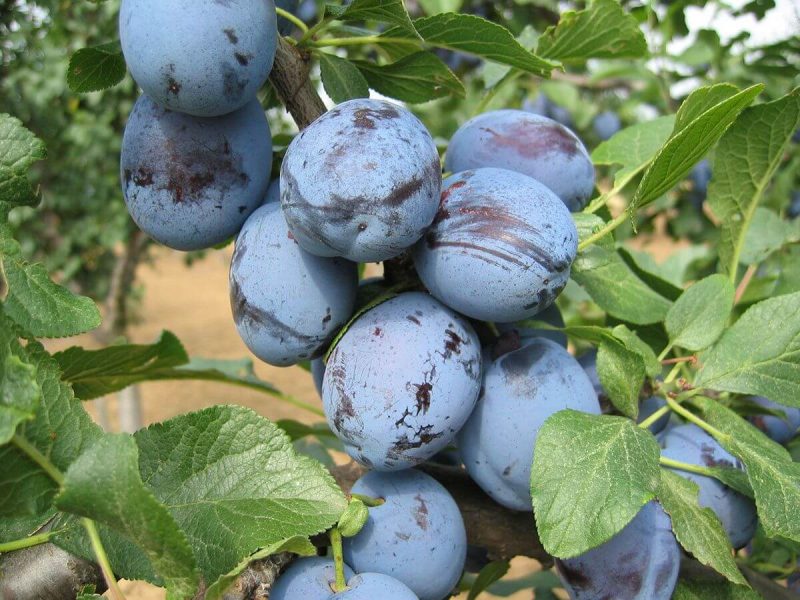
There are many reasons for poor growth of plums, for example, if they grow in the shade. There will be no crop if plums of the same variety are located nearby, and they do not pollinate each other. Plums need top dressing and good care. It is better to replace sick and old trees in time with young, new varieties.
How to care in spring
Trees need to be treated in the spring with preparations from pests and diseases, and fed. This will be the key to a good harvest. In addition, in the early spring, before the sap flow begins, it is necessary to make sanitary and forming pruning of branches, and to whitewash the trunks.
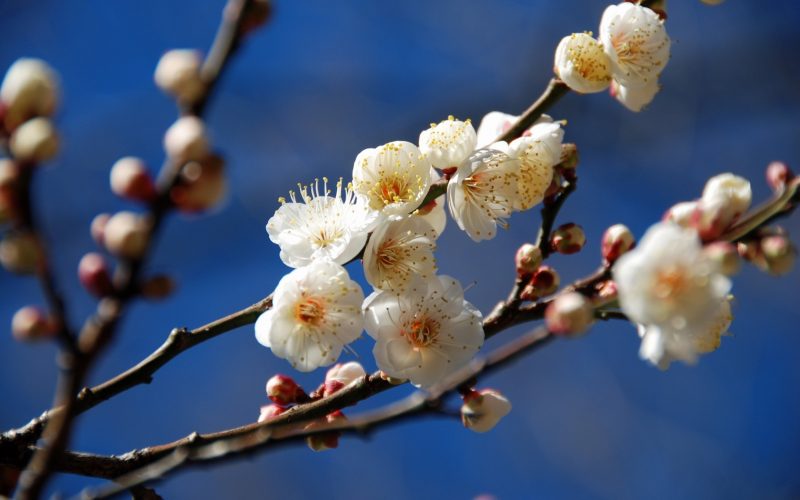
In spring, nitrogen-containing fertilizers are needed. In early spring, make a spoonful of urea or superphosphate per 1 m2 of the trunk circle. Then feed the tree after flowering. Together with mineral fertilizers in early spring, you can make ash - 1 tbsp. on 1 young tree. Plum loves this fertilizer, ash alkalizes the soil and gives the tree nutrients.
For better formation of the ovaries, the blooming plum can be sprayed with a solution of honey - 1 tsp. on 1 liter of water. This will attract bees, and the flowers of the tree will receive pollination.
Summer Care Nuances
In summer, plum should be watered abundantly. One tree will need 3 to 5 buckets of water.
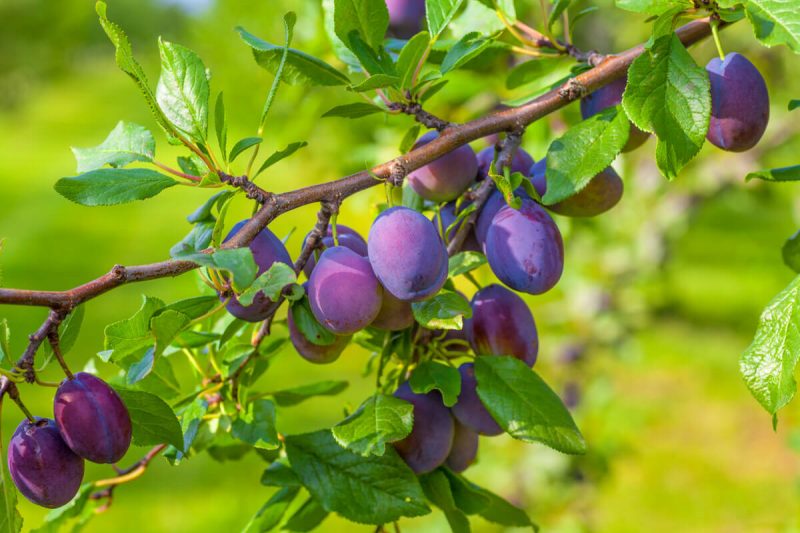
Trees can be fed with complex fertilizers with a predominance of potassium and phosphorus to improve the quality of the fruit. In summer, they begin harvesting from early and mid-ripening varieties.
Autumn Care
Harvesting ends with late varieties of plums. Under the tree, it is desirable to introduce organic matter - compost or humus, but on frozen ground. You can also use complex fertilizers without nitrogen in late August or early September.
Read also:seedless plum jam - a simple recipe
Plum trunks to protect against rodents and hares are wrapped with roofing material or other material, do sanitary pruning and additional treatment for diseases.
Winter plum in the garden
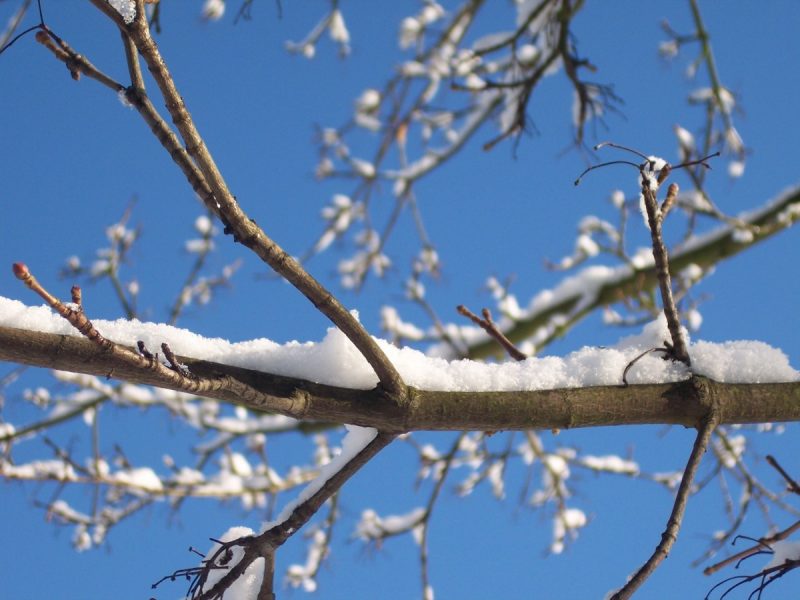
In winter, the tree does not require special care. Sometimes you can check the condition of the "insulation" on the trunk, shake off excess snow from the branches.
Diseases and pests: how to treat
Experts advise at least 4 treatments for diseases and pests per year. This is due to the frequency of release of certain insects and the phases of plant development. It is advisable not to be late with the first treatment, insects begin to wake up at a temperature of +5 ° C. It is difficult to name the exact date of the first processing of the tree, it depends on weather conditions - it is desirable that it is dry and there is no precipitation.

The first spraying with fungicides is carried out when the tree is in the closed kidney stage. This spray helps protect the plum from moniliosis and other fungal diseases. Processing with closed kidneys can be carried out with a 3% solution of Bordeaux fluid, the drug Horus, Skor, iron sulfate.
The second spraying is carried out on a green cone when the buds have already burst, but the leaves have not yet blossomed. This treatment is carried out to destroy pests with insecticides - Iskra, Intavir, Tanrek, Fufanon, Decis Profi.
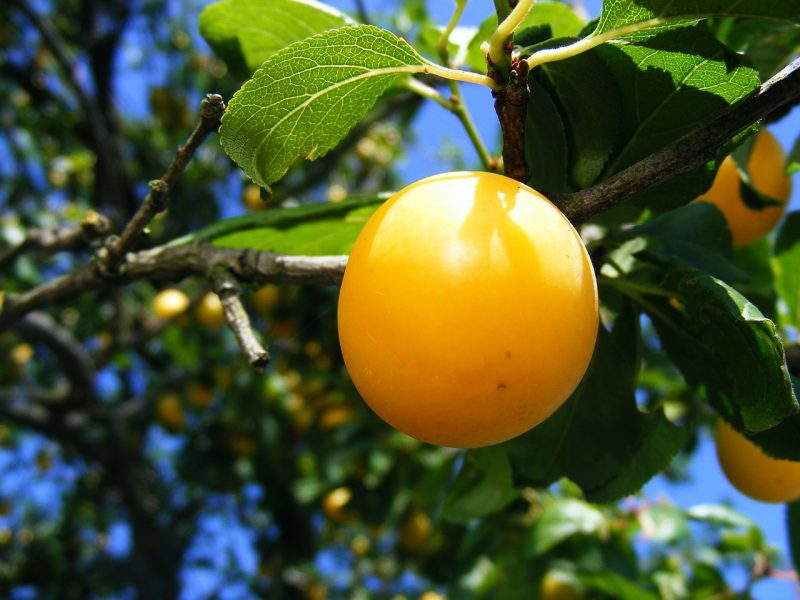
The third pest spraying is done at the pink bud stage. Already blossoming flowers can not be sprayed so as not to damage the bees. Processing is also carried out by insecticides. You can use biological preparations - Fitoverm or Bitoxibacillin, which are effective only in warm weather.
The fourth spraying is carried out on ovaries the size of a pea. Spray from fungal diseases and insects with a mixture of fungicide and insecticide.
Plum pruning technology
The cause of a weak plum crop may be a thickened crown. Its branches grow very quickly, so special attention should be paid to the formation of the tree. Every year, sanitary pruning of plums is carried out in the spring.
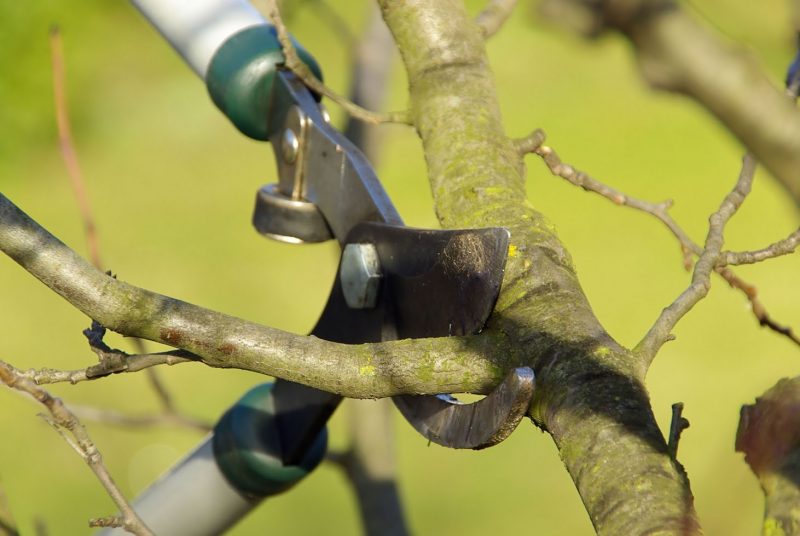
In the early years of growth, the length of the side branches is regulated. If their length is more than 60 cm, shorten by 1/3. Branches growing at an acute angle to the trunk are spread apart, tying a small load to them.
Pruning is carried out systematically, removing dry, intersecting branches. The crown of the plum should be shaped like a bowl. Then the light will fall on each branch, and the plum will give a good harvest. The first 2 years, a plum sapling can not be fed. When the tree begins to bear fruit, additional fertilizing will be needed, otherwise the yield will be weak.
Harvesting and storage
Fruits do not ripen at the same time, they are harvested in 2 or 3 approaches, focusing on the degree of maturity. The fruits are torn from the branches, and placed in boxes lined with paper in one layer. Store in a cool, dark room with an air temperature of about 0 ° C and a humidity of 85% for up to 2 months.
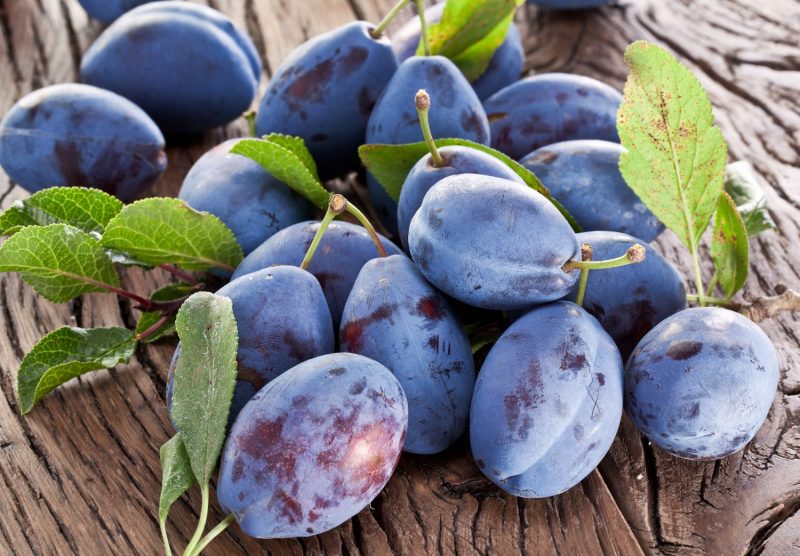
Harvest must be harvested in dry weather. Overripe or cracked fruits are immediately sent for processing - jam and jams are cooked.
A description of the quality and taste of fruits and growing requirements will help you choose a good variety of home plums.












